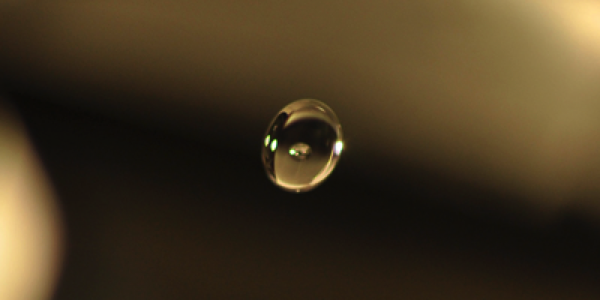Tossing and Turning
There are many reasons you might want a hands-off approach to manipulating matter. Contactless handling reduces contamination of high-purity samples and in some cases is essential to remove friction with the environment. And with a compact and highly controllable method of elevating and releasing particles, microgravity experiments that normally require infrequent and expensive space flights or large drop towers might also be possible on the benchtop. In a paper in Physical Review Letters, researchers now report a technique that uses acoustic waves to lift and spin small droplets, and even put them into tiny orbits
Daniele Foresti and Dimos Poulikakos at the Swiss Federal Institute of Technology (ETH) in Zurich perform these levitation tricks with acoustic standing waves. Sound emitted from a transducer hits a reflecting surface and bounces back to form the standing wave in one dimension; a water drop placed between the transducer and the reflector will be trapped at one of the nodes. For spatial control, the researchers use three standing-wave traps oriented in different directions; by varying the phase and amplitude of the acoustic waves, Foresti and Poulikakos can trap a spherical droplet, squish it into an oblate shape, and make it spin while suspended in air. They can also swing the droplet around in a controlled orbital motion, without causing violent liquid breakup and atomization. This technique, which the authors call acoustophoretic manipulation, could enable new kinds of matter transport as well as such things as substrate-free biochemical reactions for analysis or synthesis. – David Voss





